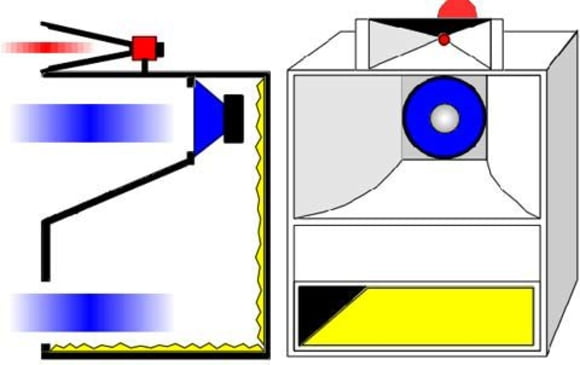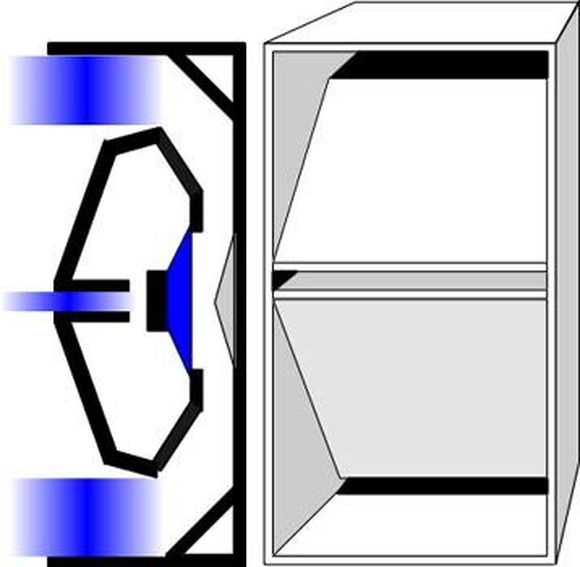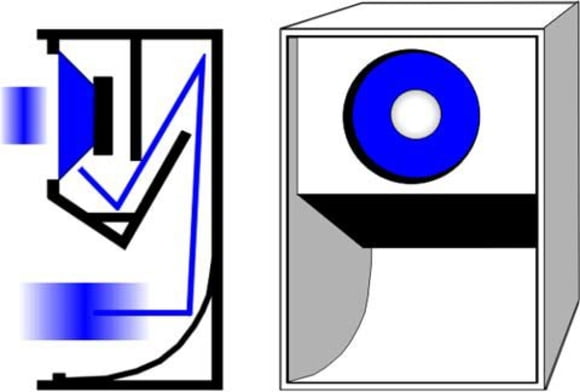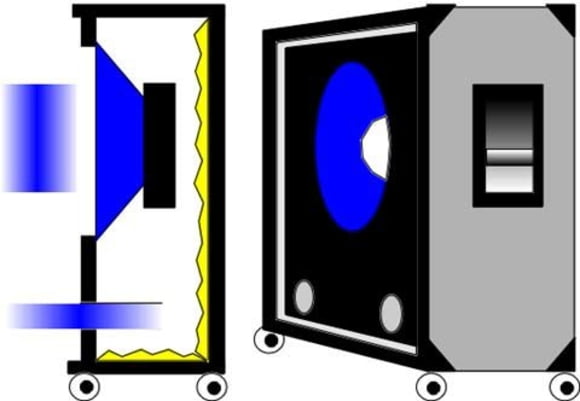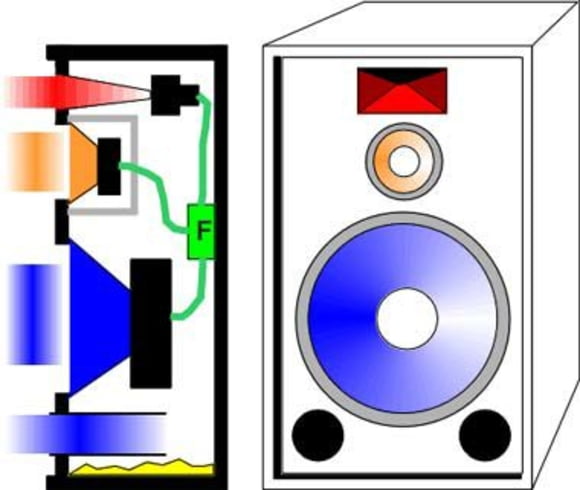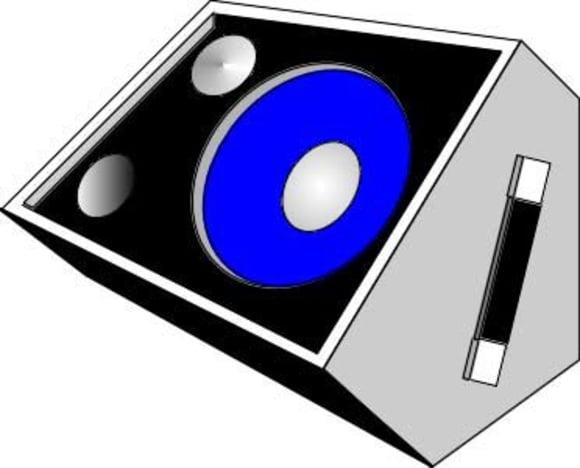5. Cabinets
Cabinets are an intrinsic part of a speaker system. As well as providing a mounting for the driver and protecting it, the cabinet makes a significant difference to the actual sound produced. The art of speaker system manufacture involves achieving a good match between the drivers themselves and the cabinet that contains them.
Guitar cabinets
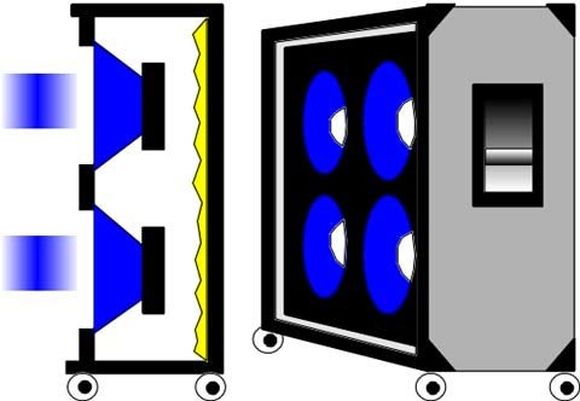
A typical 4x 12" cabinet configuration
Perhaps the most familiar multi-driver system is the guitar cabinet, with two or four 12 speakers. This is usually an enclosed cabinet, with strong mountings to dampen everything except the actual sound delivered at the front. Larger cabinets are often mounted on castors, and can be stacked on top of each other.
Exponential cabinets
This design uses the cabinet itself as a kind of horn. They serve to project a much bigger sound than a conventional cabinet.
Exponential speaker systems were actually developed for cinemas, in the days when amplifiers could not deliver the necessary power to make the talkies audible. Designers achieved an increase in SPL of as much as 9dB - effectively an eightfold boost for amps of only 20 Watts. Todays systems are more compact and portable, but they still deliver high quality sound and significant increases in volume.
There are three different types of exponential speaker cabinet:
Front-loaded bins
The driver is mounted at the back of a large horn, with an additional externally mounted horn to boost high frequencies.
Folded-horn bins
The driver points to the rear of the cabinet and the horn tapers outwards. This design is particularly suitable for bass frequencies.
Rear-loaded bins
The loudspeaker points forward, but the low frequencies flow backwards and then out through a folded horn. Good for bass and mid-range sound.
The so-called chute which can be equipped with one or two 15" speakers is an example of a rear loaded bin. While not as efficient as other exponential designs, they give a good bass sound and are particularly popular for disco systems, or as dedicated bass bins.
There are almost as many different types of exponential bins as there are manufacturers. However, in all cases the precision of the engineering involved means there is a finely balanced relationship between the length and shape of the horn, and the final quality of the sound. Dont try building one of these unless you really know what youre doing!
Bass reflex cabinets
These cabinets incorporate specially designed pipes to reinforce the sound. Again, some complex calculations are involved in ensuring the optimum damping and movement of air to achieve a sumptuous bass sound. Various sizes of reflex cabinet are available.
Crossover cabinets
In a crossover cabinet, a filter distributes the signal between a combination of drivers and reflex pipes according to their performance characteristics. Bass, mid-range and high-frequency drivers are all contained within a single cabinet. Often, the mid-range driver will be set in its own housing to prevent its cone being affected by the bass frequencies. Crossovers are excellent for voice and general sound reinforcement purposes in small and medium-sized venues. They are relatively easy to carry and can be stacked to create a bigger sound if required. Historically, they have not usually had enough range for larger venues or outdoor settings, but there are now some very competent crossover boxes on the market.
Monitors
A vital component of any system, monitors allow everyone on stage to hear whats going on. They are especially important when the whole band is mixed through the PA, and larger systems will often have a separate mix for the monitors, allowing each musician to hear the specific balance of instruments that suits them. Monitors are also useful as low-volume rehearsal PA systems.



